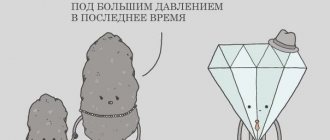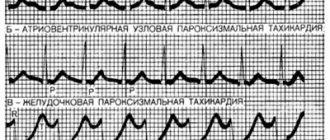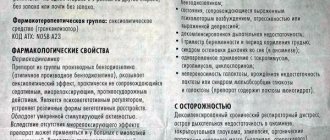What it is?
At the very beginning, you need to understand the main term that will be used in the article. So, chills in their essence are a spasm of those blood vessels that are closest to the human skin. When people talk about chills, they most often mean:
- Feeling cold.
- Trembling and muscle spasms (body tremors).
- The appearance of so-called “goose bumps”.
Chills themselves can appear at any time of the day, regardless of the type of human activity.
Symptoms and signs of chest vibration
Often, fluttering in the chest begins directly in the heart area, then radiates throughout the chest
Trembling in the chest area can be different in men and women. Quite often, fluttering begins directly at the location of the heart, but gradually this feeling radiates throughout the chest or even the body.
Patients describe the condition in different ways:
- “cat purring”;
- hum;
- noise;
- vibration;
- humming.
This condition may be accompanied by fainting, a feeling of an uneven and strong heartbeat, a feeling of lack of oxygen, and dizziness. In most cases, an unpleasant symptom has a certain pattern in its manifestations. For example, during stressful situations or during physical activity. The severity of the symptom may depend on the time of day, usually worsening before bedtime.
Trembling in the heart may be accompanied by bouts of nausea
Other signs of heart palpitations:
- Frequent urination occurs periodically;
- general weakness and fatigue;
- decreased performance;
- if high heart rates are observed, loss of consciousness or fainting may occur;
- feeling of squeezing and discomfort in the chest;
- attacks of nausea;
- increased blood pressure;
- difficulty breathing, shortness of breath.
Attacks can last from a few seconds to several tens of hours.
The condition is rarely accompanied by pain. But this is not a reason to postpone a visit to the doctor, since tremor in the sternum may indicate the development of serious diseases. Especially if we are talking about constant attacks that last for a long time.
Reason 8. Diseases
Doctors say that chills can also be caused by certain diseases that are not associated with a cold. When can this symptom occur?
- Improper functioning of the thyroid gland. In addition to chills, there will be symptoms such as fever, fatigue and lethargy (symptoms similar to a cold).
- Hormonal imbalances can also cause problems such as chills. In this case, people most often talk about diabetes mellitus.
- Severe chills can cause a disease such as malaria.
How to remove trembling and chills during VSD
It is not logical to treat tremors and chills with vegetative-vascular dystonia from a medical point of view, because the symptoms are simply caused by fear and a feeling of danger. Thus, the problem is purely psychological and needs to be solved by a psychologist. And if the form of the disorder is severe, then pharmacology must be used to reduce anxiety.
For independent work, we can recommend:
- Be as calm as possible about shaking, chills, and other symptoms if you have them. These symptoms are not dangerous and are simply caused by your fear.
- Control your fears, don’t stress yourself out by reading about any diseases.
- Engaging in physical activity - this can warm you up better than tea, alcohol and warm socks. Jogging, exercise - it seems so banal, but in fact it helps to stabilize the state of health during VSD.
- Reconsider your lifestyle. Perhaps there are too few walks, good films, interesting people and positive plans? Very often, by changing their lifestyle, a person forever forgets about the many symptoms of vegetative-vascular dystonia.
Reason 9. Women's
Why might women experience chills? The reasons in this case may be the following:
- Emotional fluctuations. It will not be a secret to anyone that women are more emotional than men. Even if a little nervous, a lady may begin to feel cold. You can cope with this situation quite easily: you need to drink chamomile tea, listen to pleasant music and take a warm bath. In some cases, you can also take a sedative (for example, the drug "Glycine").
- Chills in women can also alternate with hot flashes. This is possible if a woman is going through menopause. To cope with the problem, you need to seek help from an endocrinologist or gynecologist (this problem is associated with changes in the woman’s hormonal levels).
- Menses. Infrequently, women may experience chills during monthly discharge - menstruation. This condition most often appears in the first days of discharge. Other possible symptoms: weakness, fatigue, low performance, pain in the lower abdomen.
How to get rid of jitters
To understand how to get rid of jitters without much effort before significant events, you will need to choose a technique that will help you quickly relax, find peace and calm your emotions. You can try different methods, but everyone will find a specific strategy that will help achieve the goal.
You can overcome jitters with the correct use of deep breathing. Here the role is played not by filling the brain with oxygen, which “turns on” reason and logic, but by concentrating on the rhythm of inhalations and exhalations, on their counting. This distracts from the process of experiencing.
There is abdominal and thoracic breathing. Belly breathing is good for relaxation. You need to inhale and exhale evenly, slowly, deeply, concentrating on the process. Relaxation often requires inhaling faster than exhaling. For example, inhale for 3 counts, and exhale for 6 counts. It is important to hold the air a little at a difficult moment.
To activate brain activity, on the contrary, exhalations must be made shorter than inhalations. And if unpleasant symptoms occur, such as dizziness or nausea, return to the usual rhythm of inhalation and exhalation, but then try again.
When should you see a doctor?
It is worth saying that chills can be a symptom of a serious illness that cannot be dealt with on your own (without medical help). In what situations should you consult a doctor?
- If chills are accompanied by nausea, vomiting, diarrhea. In this case, poisoning, intoxication of the body, and disruption of intestinal function are possible. If timely and adequate assistance is not provided, various types of inflammatory processes may begin.
- Chills can occur as a symptom of a food allergy. In this case, it appears after taking an allergen product.
- If chills are accompanied by a cough, runny nose, or fever, this may indicate that the person has a cold or flu. However, these symptoms can also occur in more serious diseases. And only a doctor can make the correct diagnosis.
- Chills may appear immediately after arriving from a trip to exotic countries. In this case, you should immediately go to an infectious disease specialist.
- If chills recur periodically at the same time, and your blood pressure also rises, you need to go see a cardiologist. These symptoms in this case may be indicators of a disease such as hypertension. If left untreated, a person may have a stroke.
Why does the body tremble during VSD?
If you listen to the trembling, it comes from the inside, from the abdominal cavity.
It was as if the gastrointestinal tract suddenly got scared of something and trembled, sending its impulses to the limbs. If the body is trembling, it, as a rule, tries to warm up, gain temperature - because of this, the muscles contract spasmodically. But what motivates a person to freeze when central heating turns the apartment into a southern continent? The answer is simple and obvious: the autonomic nervous system! It is she who is trying once again to “adjust” the balance between her two departments, but nothing works out. A person, feeling these “altercations” in the central nervous system, begins to worry, generate unpleasant thoughts, succumb to phobias or give in to a panic attack. All this causes an adrenaline rush. Body trembling during VSD can be almost endless, forcing the body to constantly be in tension and the soul to be in fear.
Adrenaline switches the body into “fight” mode. This is how the nature of any living creature works. If a life-threatening danger looms, you need to react immediately: jump up and run, or fight. And most importantly, you need to think quickly. This is why the blood vessels narrow, the muscles tense, and the blood flows mainly to the heart and head. When a person is in danger, he is unlikely to eat while running or fighting.
Therefore, nature temporarily “cuts off” the abdominal organs and gastrointestinal tract from the blood supply. But the body should not freeze, and nature understands this. Therefore, it gives the abdominal muscles a signal to contract and warm the body. It is this spasmodic contraction of the abdominal muscles that is felt by a person as trembling. In this case, the temperature naturally rises to the low-grade level (37 degrees).
If this heat is not enough, the limbs may also tremble - nature has many ways to warm the human body. And the trembling in the body itself during VSD can have different manifestations: the patient can tremble in the stomach like an aspen leaf, and sometimes the shaking can be so strong (during a panic attack or stress) that the person is not able to hold a mobile phone or a glass of water in his hands.
Diagnostics
Clinic specialists prescribe general methods:
- collecting information and taking an anamnesis;
- thorough examination by a specialist;
- general blood, urine, and stool tests.
Diagnosis of tremor:
- Method of high-frequency shooting with slow motion.
- Testing with a tremograph that records trembling in a 3D plane.
- Electromyography. The method provides a quantitative assessment of rhythmic muscle contractions.
Diagnosis of increased sweating:
- Minor's test - starch iodine test. The places of greatest sweating and concentration of glands are determined.
- Gravimetry is a quantitative method for estimating the volume of sweat produced per unit time.
- Chromatography is a non-invasive method for determining the concentration of unsaturated fatty acids in sweat by analyzing the resulting spectra.
Treatment
The therapeutic complex is prescribed in accordance with the identified cause of tremor and sweating. The technique is selected individually. Sometimes surgery is required. Some pathologies are incurable, for example, parkinsonism. In this case, palliative treatment with medications that relieve symptoms is prescribed.
Infectious lesions are treated with antibiotics, Aspirin, Ibuprofen, Acetaminophen. Immune disorders - with a special complex of drugs. Oncology - surgery, chemistry, radiation.
General recommendations from doctors:
- Ensuring proper rest.
- Healthy, balanced diet. Avoid overeating.
- Body weight control.
- Alternating physical activity with rest breaks.
- Walks in the open air.
- Avoiding stress. You should learn to abstract yourself from problems and master relaxation techniques.
- Take sedatives with herbal ingredients: tincture of motherwort, peony, valerian.
- Reduce caffeine intake.
- Quit alcohol and smoking.
- Follow your doctor's recommendations.
- Drink vasodilators, anticonvulsants, antisclerotics, sedatives and tranquilizers only as prescribed by a doctor. Do not self-medicate.
What factors can provoke the occurrence of tremors?
- constant exposure to stressful circumstances;
- frequent panic;
- depression;
- infectious diseases;
- staying indoors with a lack of fresh air;
- chronic pathologies (hypoglycemia, epilepsy, increased amounts of certain hormones in the blood);
- deficiency of cerebral blood supply (as a consequence of TBI);
- taking certain medications (antidepressants, antipsychotics aimed at treating asthma, glucocorticosteroids);
- acute deficiency of minerals and vitamins in the body;
- menopause period.
The depletion of nerve cells, observed against the background of these factors, leads to malfunctions in their work. Internal trembling is one of the manifestations of such an imbalance in the system.
PROLONGED DRY COUGH, SEVERE WEAKNESS, MUSCLE SHAKES.
Hello. Perhaps in the question, after a detailed presentation of the problem, you, Alexander Yuryevich, can advise something?
I’ll state the essence: on the 1st, my throat hurt badly when swallowing (no tonsils, tonsilectomy). It hurt for 2 days, then a severe runny nose, watery eyes, slight soreness, and a slight dry cough appeared. In a word, I caught a cold. On one single day the temperature rose in the evening to 37.2-37.4. After 2-3 days, the runny nose went away, but the cough remained, which intensified over the course of several days and continues to bother me to this day. The cough is dry, occasionally some mucus comes out from somewhere under the Adam’s apple, and it’s there that something “sores” the throat, causing a cough. At night it intensifies, from 24:00-05:00. I don't sleep at this time, because... The regime has been very disrupted for several years now and they have been coughing a lot. Then I fall asleep and, according to my mother, I don’t cough at all in my sleep.
I can also note that when you inhale/exhale, at the end something like wheezing appears, as if something in the bronchi is interfering. If you cough “this is something” for a long time and persistently, then you don’t want to cough for a couple of hours. All this happens mainly at night during the specified period.
Also in the cough 3-4 times there were small streaks of scarlet blood, no more than a cherry pit.
Now about the weakness: It appeared on the 14th and does not go away. The weakness is not ordinary, like fatigue after an acute respiratory viral infection, but something sharp in the muscles, and a slight trembling when moving, for example, when I reach for a mug/squeeze, unclench my fist, severe weakness and muscle tremors EXACTLY when unclenching my fist, when I put my hand back, reaching for something.
Weakness worries the most, because... she makes it very bad. Also during the day I just feel very weak, even when I’m lying on the bed. It’s as if I’m tired and need to take a nap for 2-3 hours. After a night's sleep I wake up unloading a truck full of bricks - there is no relief.
On days 5-6 of the illness, I visited a pulmonologist, and an X-ray of the lungs was performed in a direct projection. Crazy prescriptions, such as immunomodulators and “vitamins”. I didn’t hear anything in the lungs, so I diagnosed tracheo-bronchitis.
I went to him when severe weakness began. He said that it was pneumonia that was starting and that antibiotics were needed. That weakness is a manifestation of intoxication from this very pneumonia. I passed the UAC, SRB - everything is normal (I’ll post the results again later in the comments, Alexander Yuryevich). I decided not to go to this wonderful specialist again, who, if pneumonia is suspected as a complication of ARVI, prescribes antibiotics without OAC and without X-rays!
Visited a local therapist. I immediately prescribed an antibiotic without OAC at that time, sodium thiosulfate into a vein, ascorbic acid into a muscle. Also something anti-allergenic, because... “You could also be suffering from allergies.” I was embarrassed to ask about immunoglobulin E.
I would really like to understand what to do next so as not to suffer from these symptoms and find out their cause. Perhaps this is something serious and a consultation with a phthisiatrician, oncologist, or hematologist is needed? I was suspicious and ALREADY (!) against the background of the symptoms, at first I was stressing myself out, I had a panic attack.
Now I have calmed down and am simply ready to perform the necessary examinations, undergo a consultation with the necessary specialists, so that perhaps you can suggest something useful to me in terms of a diagnostic search.
source
Hypoglycemia
The disease develops when there is a strong drop in blood sugar. As a result, the brain and the body as a whole experience oxygen starvation due to lack of glucose. The condition is characteristic of diabetes mellitus. But hypoglycemia may occur in a healthy person in the form of a single attack.
Typically, the limbs shake with severe fatigue in any state - rest or movement. Increased sweating and severe weakness develop. Symptoms disappear abruptly when blood sugar normalizes.
NERVOUS AND/OR FEELING OF INTERNAL TREKING
In some cases, surgery is indicated. If such an unpleasant symptom is associated with nervous overstrain, fatigue, stress, then you can try using traditional medicine... Quite often, tremor of the limbs develops against the background of unfavorable heredity, at the same time, in some cases, tremor is malignant in nature and is quite severe... Very important to establish the cause of trembling of the limbs, as this is important for treatment and the choice of a specialist who will monitor the patient’s condition.








